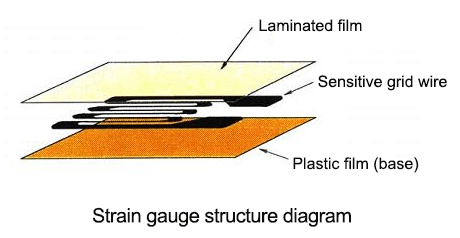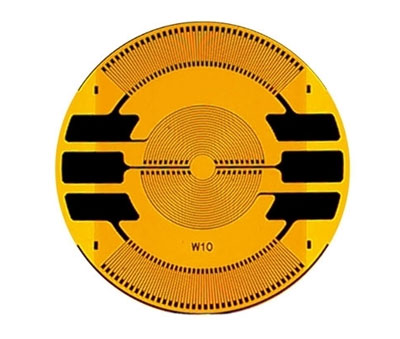Strain Gauge: Working Principle and Type
Strain gauges make good use of the physical and geometric properties of conductors. When a conductor is stretched by an external force within its elastic limit, it will become narrower and longer without being broken or permanently deformed. This deformation leads to an increase in its terminal resistance. Conversely, when a conductor is compressed it becomes wider and shorter, and this deformation results in a lower resistance at its terminals. By measuring the resistance of the strain gauge, the strain in the area covered by it can be calculated. The sensitive grid of the strain gauge is a group of parallel wires arranged in a narrow conductor strip in a zigzag manner. This arrangement can accumulate small deformations in the baseline direction to form a larger cumulative value of resistance change. The measurement object of the strain gauge is only the deformation of the area it covers, and a small enough strain gauge can be used in stress analysis such as the finite element method.

Optical strain gauge
Optical strain gages are typically fabricated using Bragg grating glass fibers no larger than 4-9 microns in diameter. Generally speaking, the diameter of human hair is 60-80 microns. The fiber core is surrounded by pure glass cladding with a diameter of approximately 125 microns.
Strain gauges based on Bragg gratings have the following advantages:

- Not sensitive to electromagnetic fields.
- Can be used in potentially explosive environments.
- The material (glass) will not fail under high shock loads.
- Larger strains can be measured, the maximum strain of general resistance strain gauges is hundreds of microstrains, and the maximum measurable strain of optical strain gauges is 7000 microstrains.
- Fewer connecting wires, so there will be less interference with the test object.
- Interconnection requires a large number of sensors, and different Bragg wavelengths can be integrated into one optical fiber.
Resistance strain gauge
The working principle of the resistance strain gauge is based on the strain effect, that is, when the conductor or semiconductor material is mechanically deformed under the action of an external force, its resistance value changes accordingly. This phenomenon is called the "strain effect".
Semiconductor strain gauges are made of semiconductor materials, and their working principle is based on the piezoresistive effect of semiconductor materials. The piezoresistive effect refers to the phenomenon in which the resistivity of a semiconductor material changes when an external force acts on a certain axis.
A strain gauge is a component consisting of a sensitive grid for measuring strain, which is firmly attached to the measurement point of the component when it is used. After the element is stressed, the sensitive grid is deformed due to the strain at the measurement point, and the change in resistance is then measured by a special instrument and converted to the strain at the measurement point.
There are many kinds and forms of metal resistance strain gauges, and the common wire resistance strain gauges and foil resistance strain gauges are common.
The box-type resistance strain gauge is a sensitive element based on the strain-resistance effect, using metal foil as a sensitive grid, which can convert the strain of the tested piece into the resistance change. There are many types of strain gauges. A general strain gauge is a plastic film (15-16μm) called the base. A sensitive grid (3-6μm) made of a thin metal foil is pasted, and then a layer of film is covered to form a laminated structure.
There are many other ways to divide strain gauges. According to the structure, they can be divided into single-piece strain gauges, right-angle strain gauges, and strain rosettes, as well as special shapes; according to materials, they can be divided into metal types, such as wire strain gauges and foil strain gauges. Semiconductor types, such as thin film strain gauges, diffusion strain gauges, epitaxial strain gauges, and PN junction strain gauges; according to the use environment, they are divided into high-temperature strain gauges, low-temperature strain gauges, high-pressure strain gauges, magnetic field strain gauge, underwater strain gauge.

